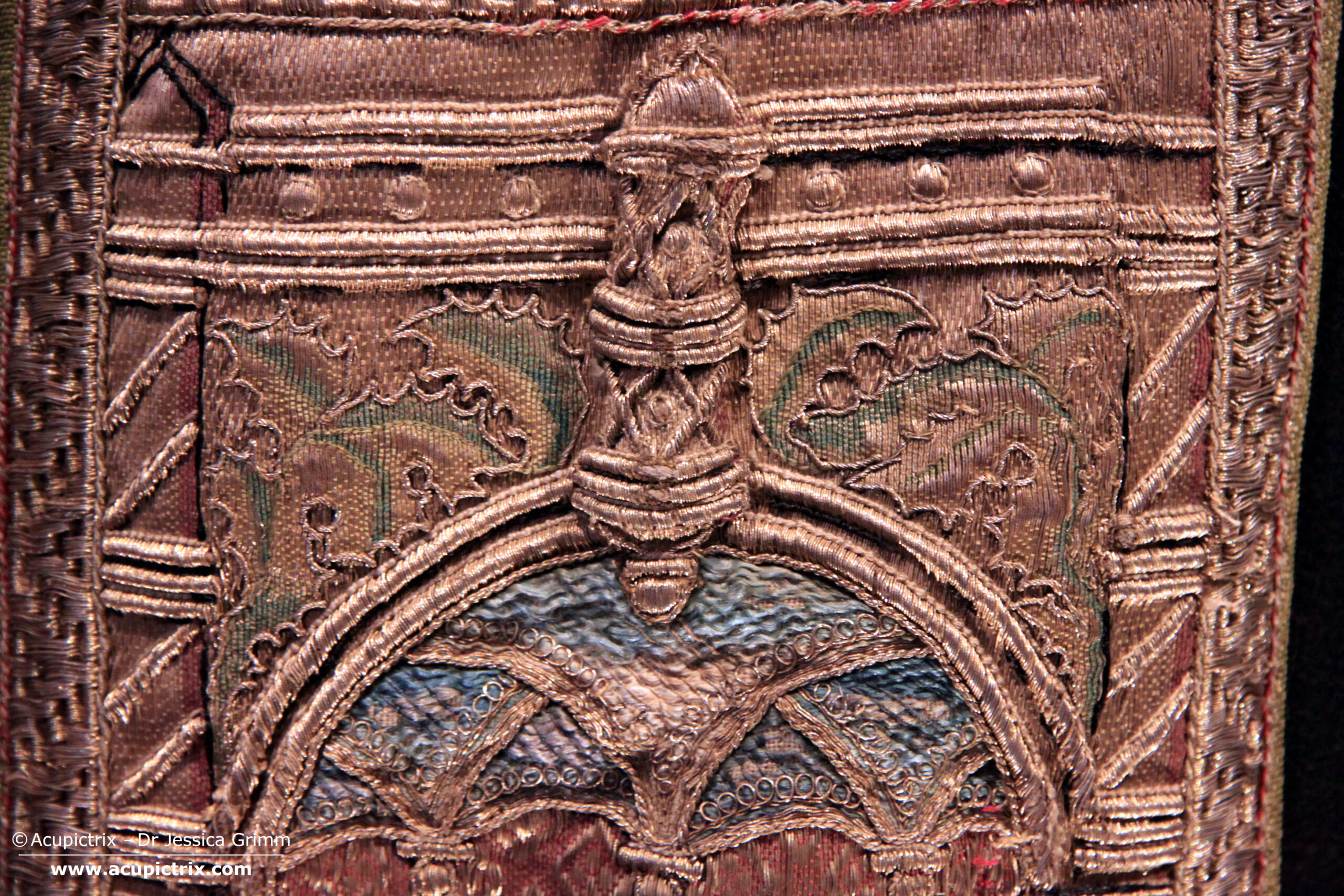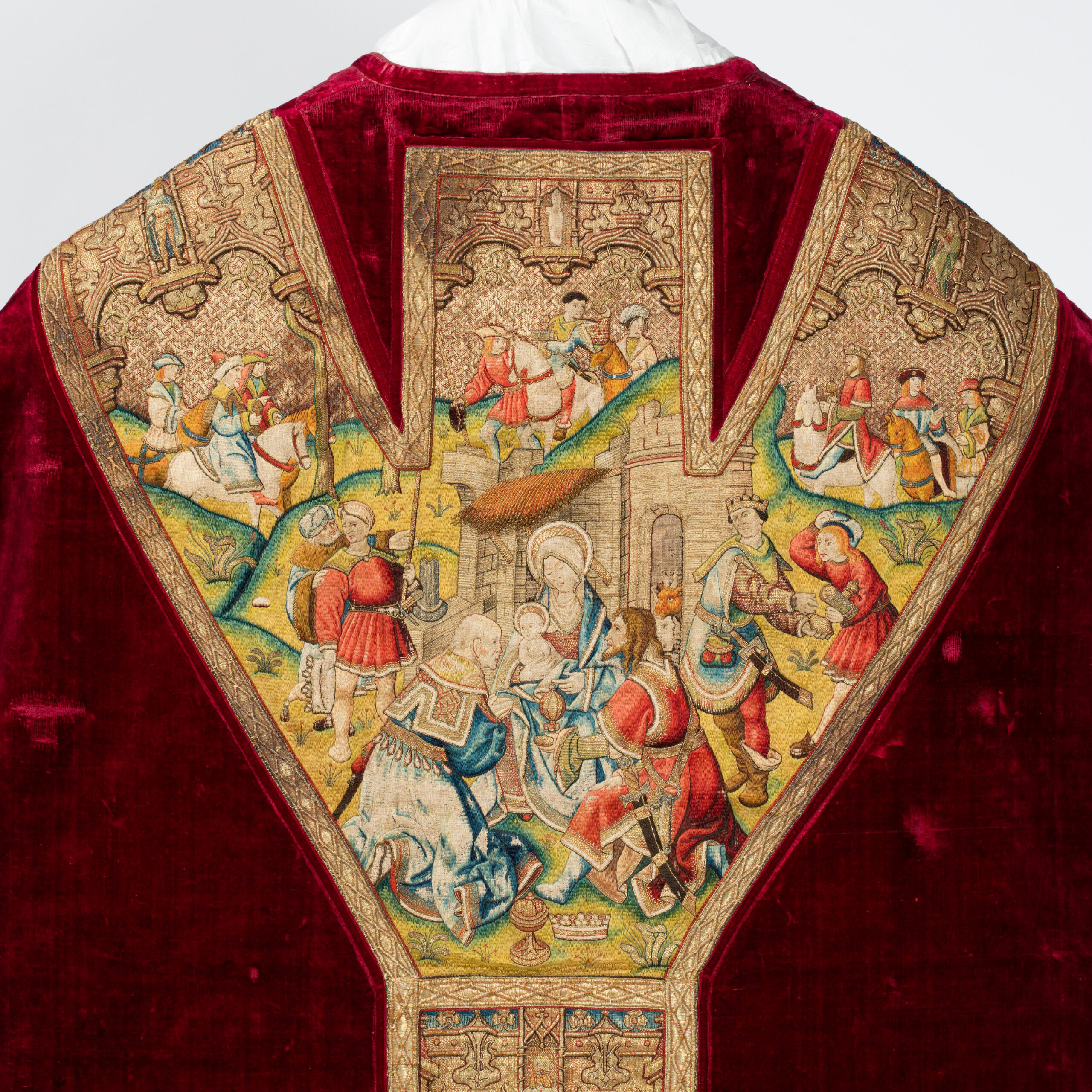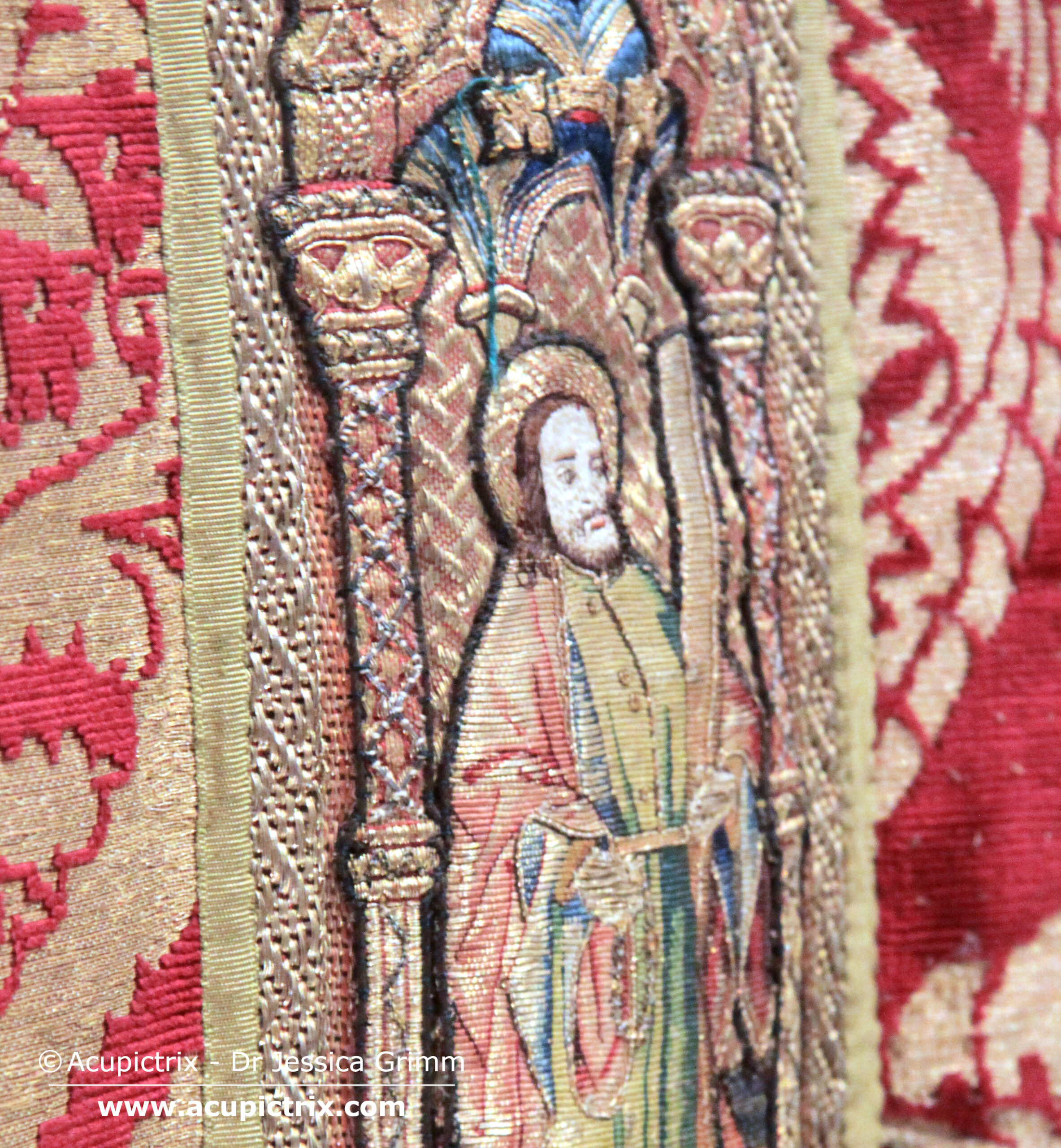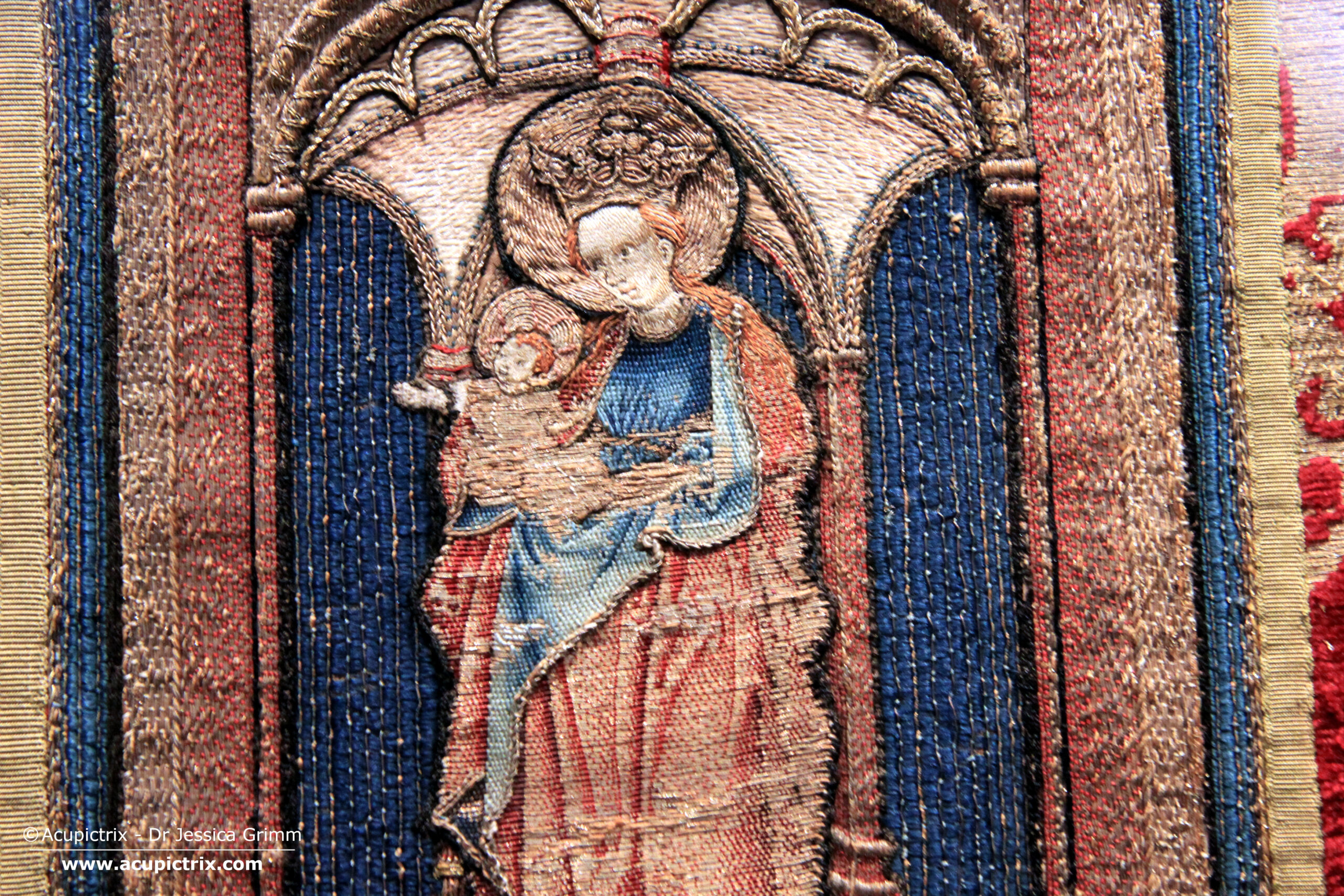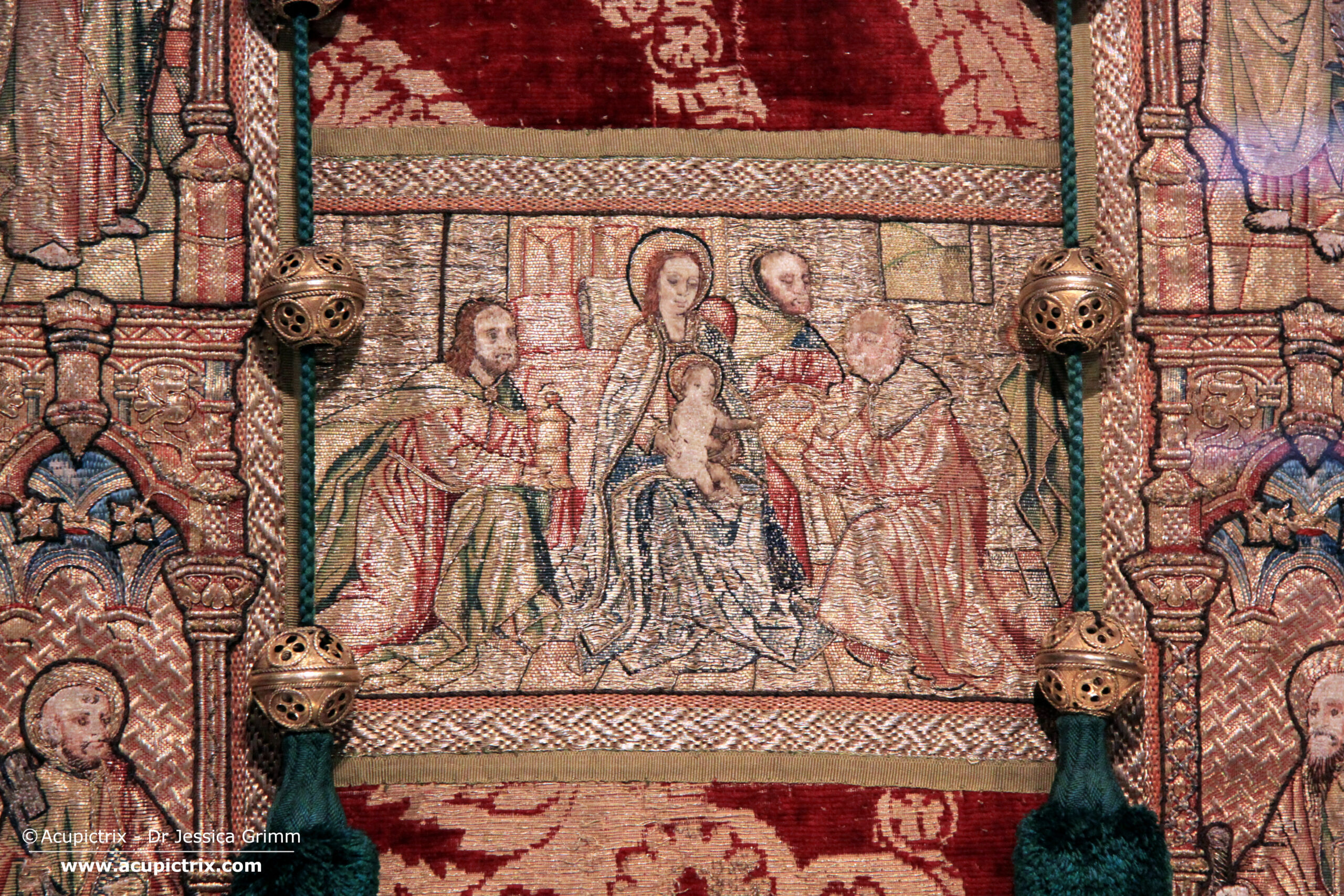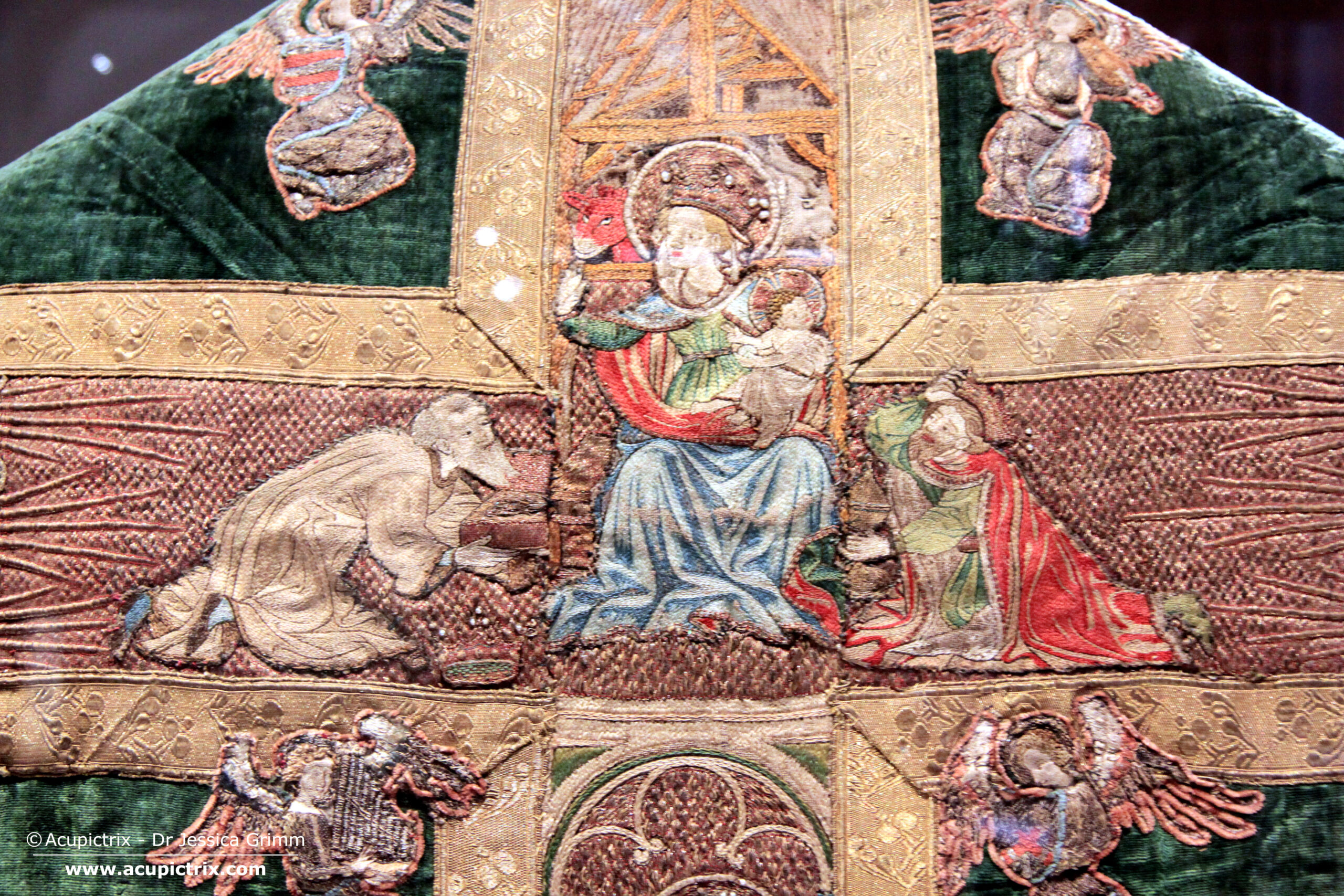Dutch late medieval goldwork embroidery: a cope from Hulst
This week, we continue our exploration of late medieval goldwork embroidery from the Netherlands. I made an exciting discovery on a cope kept at the Dommmuseum Frankfurt in Germany. The Dutch dalmatics I showed you last week ended up in a museum collection in Italy after they were bought at Read more
